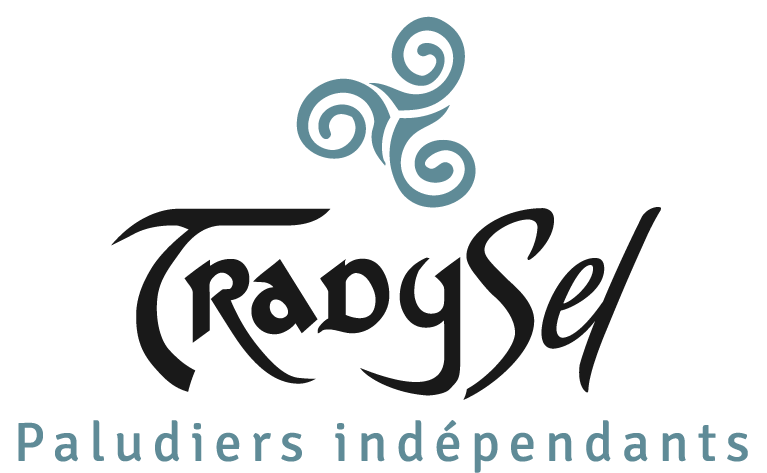The profession of paludier
The profession of paludier is guided by nature.
The marsh is a «great lady» we are only his servants, we will pass, and if we worked well, he will survive us.
Charles Rio
Father of the founder of Tradysel
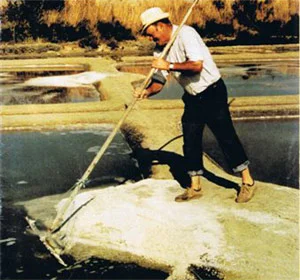
Nearly 380 salt producers, real farmers of the sea, called «salt workers» exploit these salt pans in respect of the ancestral tradition. There are about 12,000 « œillets » that produce about 15,000 tonnes of salt sold annually. Today, the average size of a salt marsh is 50 to 60 « œillets ». Salt production remains today a pillar of the primary economy of the Guérandaise peninsula.
So we must not minimize the generations of salt beds that followed us. Between land and sea, the Guérande Paludiers perpetuate the traditions of a craft in the heart of nature on a unique territory.
We work on authentic saltworks maintained in original condition by generations of salt workers. Thanks to an ancestral harvesting method, our product is artisanal and natural.
We are the heirs of a millennial know-how and TRADYSEL continues to install new paludiers also promoting the sustainability of their exploitation. Our palaudiers are a living guarantee and thus contribute to the preservation of this exceptional site, more than a thousand years old, without making it a museum or a natural reserve, but a profitable workplace, preserving employment, history and a remarkable ecosystem.
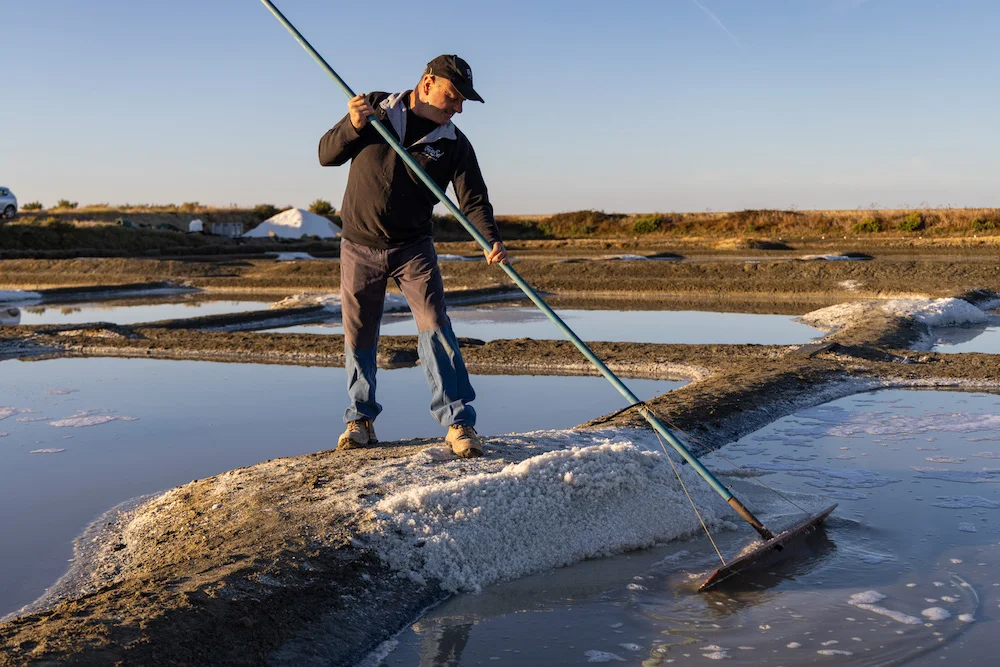
Summer
The paludier is in the middle of the season, it’s time to harvest the salt and the fleur de sel from the « œillets ». The climatic conditions must be met, we need heat, wind and sun, otherwise crystallization does not work.
Every summer day we are present in our salt pans to open or close our water and to collect the salt that nature offers us.
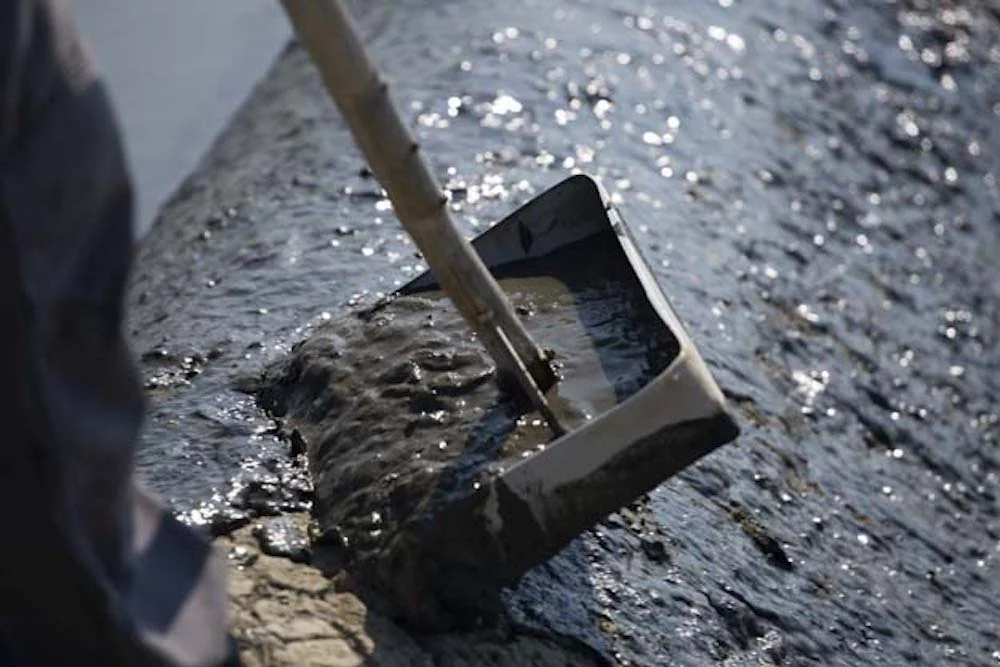
Springtime
With the arrival of sunny days, the restoration of the salines continues but the work of preparation begins.
The marshes are «aligis» that is to say emptying to be then reconstituted and cleaned.
It is time for "dressing" to remove the mud from the "fares" and to reshape the bridges. We then clean the «adernes», and finally the «carnations», by the bypass, the cutting, then the unloading which takes place when the salt arrives (usually in early June).
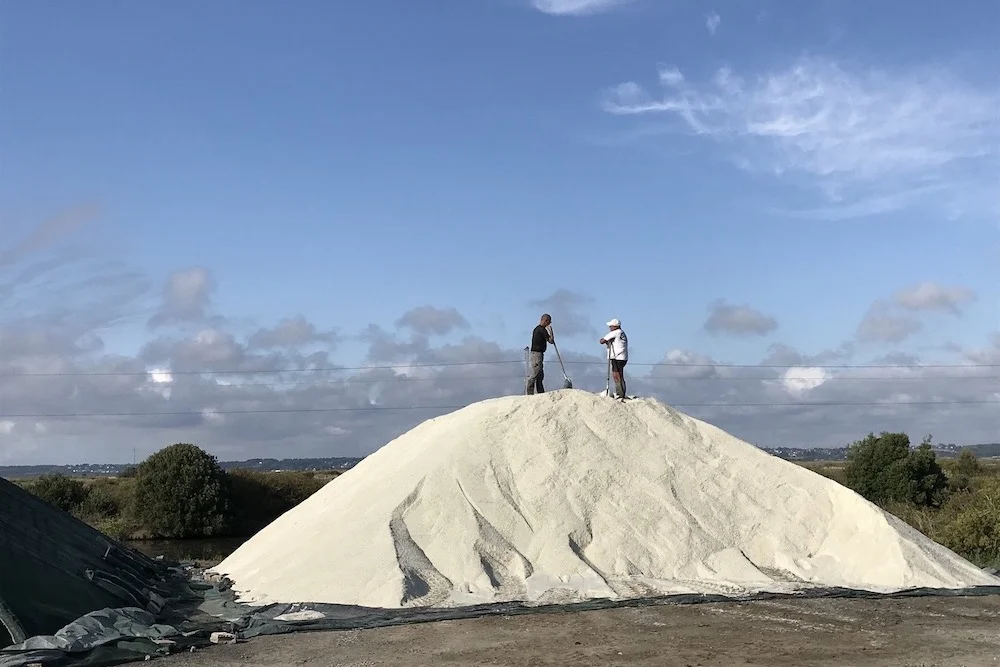
Autumn
Little by little the days are getting shorter, production is decreasing and the end of the season is approaching. Now is the time to «roll the salt», that is to say to recover the salt from the producers in the marsh in order to store it and to put it in shelter.
With the rain comes the «Pioué», a thermal that marks the end of the season. This means that the marshes have taken enough fresh water to prevent crystallization.
The salines are then put into water, that is to say they are covered with water to be protected from winter weather.
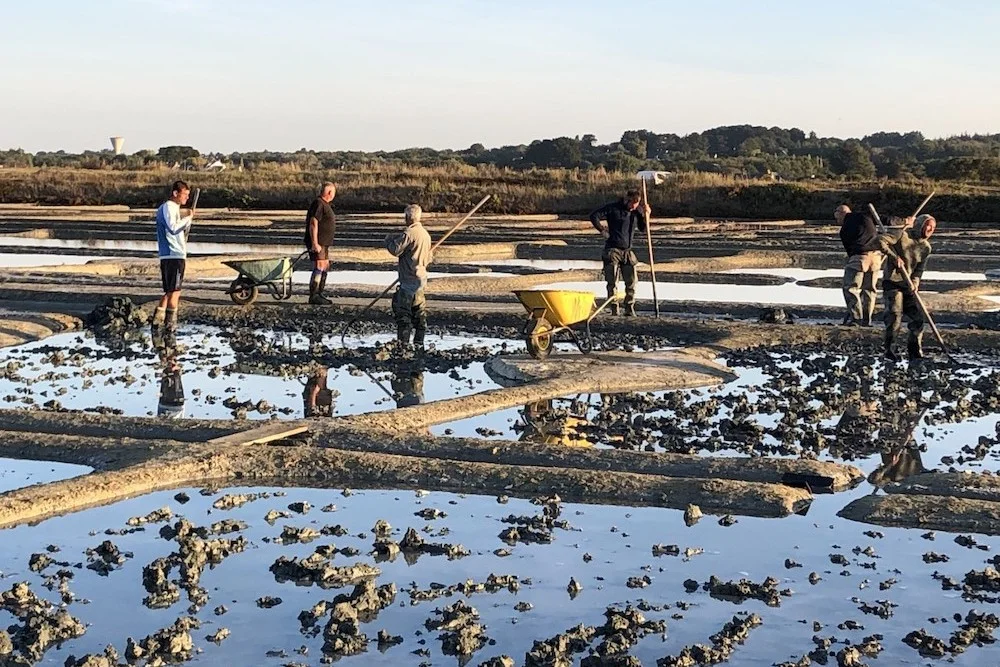
Winter
Depending on the weather, the usual cleaning and restoration work begins.
Winter is a quiet time, but we always have to do things like cleaning mud flats, cobs, embankments, towers and other peripheral areas. There is also exceptional refurbishment or maintenance every 10 or 20 years. The tipping which constitutes the upgrading of «fares» which are crowded with sedimentary vegetation called «hulls» takes place every 10 years. The shoe that restores the shape and level of the eyelets' bottom is made every 20 to 30 years. This work is always done as a team.
